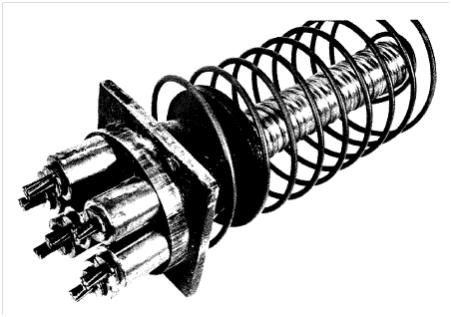There are two methods of prestressing:
• Pre-tensioning: Apply prestress to steel strands before casting concrete;
• Post-tensioning: Apply prestress to steel tendons after casting concrete.
Pre-tensioning
This is the most common form for precast sections. In Stage 1 the wires or strands are stressed; in Stage 2 the concrete is cast around the stressed wires/strands; and in Stage 3 the prestressed in transferred from the external anchorages to the concrete, once it has sufficient strength:
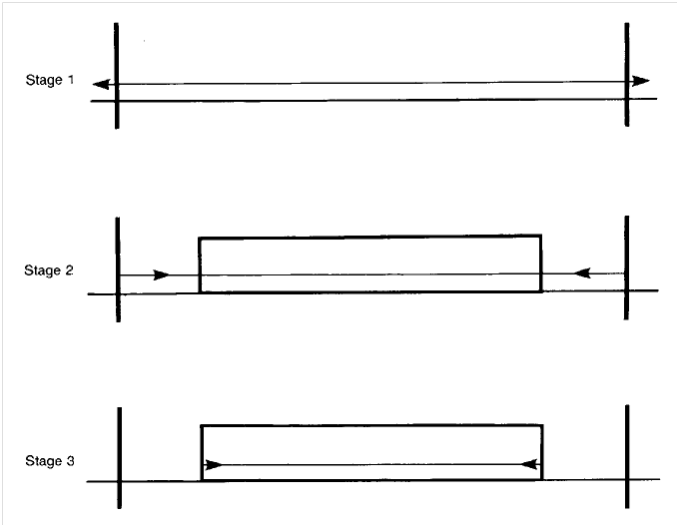
In pre-tensioned members, the strand is directly bonded to the concrete cast around it.
Therefore, at the ends of the member, there is a transmission length where the strand force is transferred to the concrete through the bond:
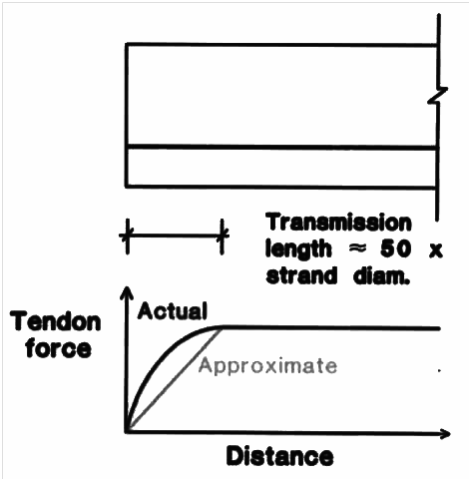
At the ends of pre-tensioned members it is sometimes necessary to debond the strand from the concrete. This is to keep the stresses within allowable limits where there is little stress induced by self with or other loads:
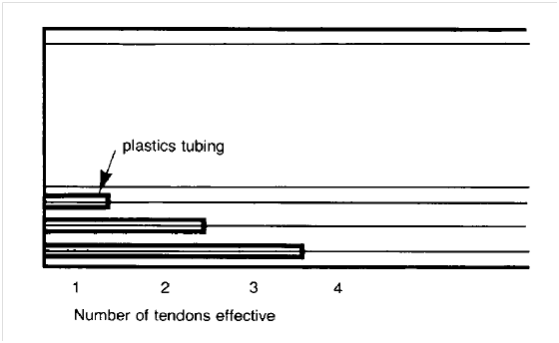
Post-tensioned
In this method, the concrete has already set but has ducts cast into it. The strands or tendons are fed through the ducts (Stage 1) then tensioned (Stage 2) and then anchored to the concrete (Stage 3):
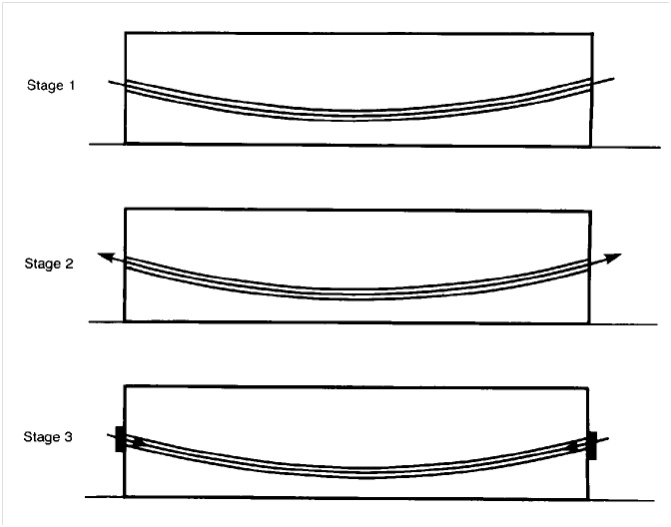
The anchorages to post-tensioned members must distribute a large load to the concrete, and must resist bursting forces as a result. A lot of ordinary reinforcement is often necessary.
A typical tendon anchorage is:
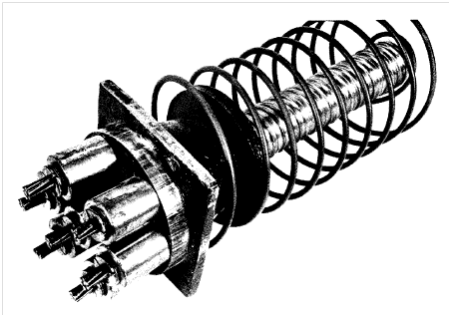
And the end of a post-tensioned member has reinforcement such as:
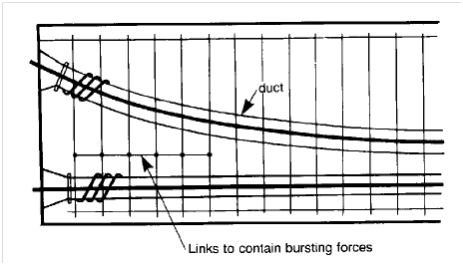
Losses
From the time the prestress is applied, the prestress force gradually reduces over time to an equilibrium level. The sources of these losses depend on the method by which prestressing is applied.
In both methods:
• The member shortens due to the force and this relieves some of the prestress;
• The concrete shrinks as it further cures;
• The steel ‘relaxes’, that is, the steel stress reduces over time;
• The concrete creeps, that is, continues to strain over time.
In post-tensioning, there are also losses due to the anchorage (which can ‘draw in’ an amount) and to the friction between the tendons and the duct and also initial imperfections in the duct setting out.
For now, losses will just be considered as a percentage of the initial prestress.

